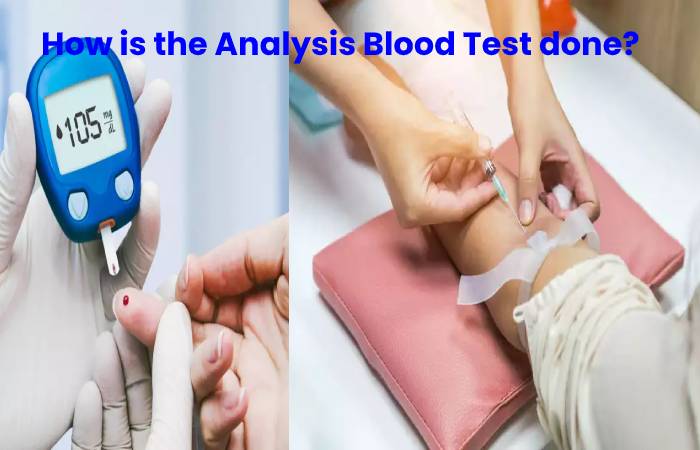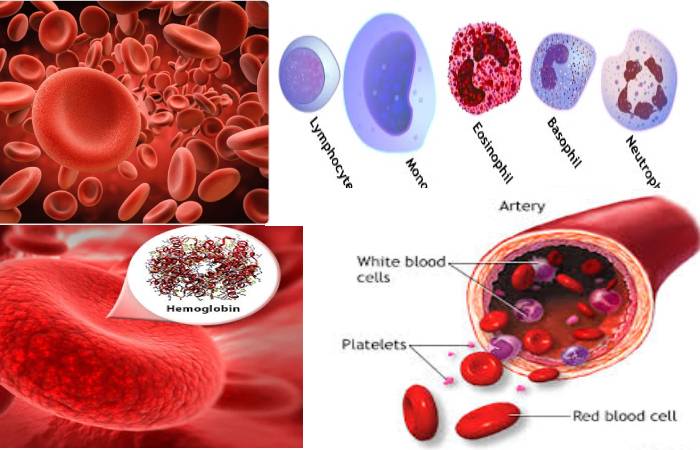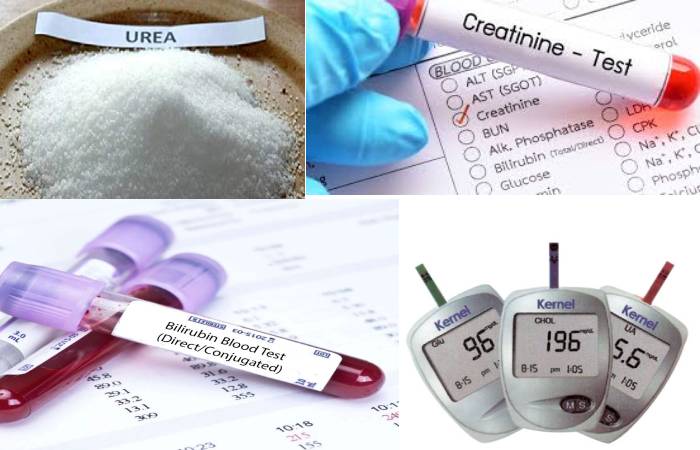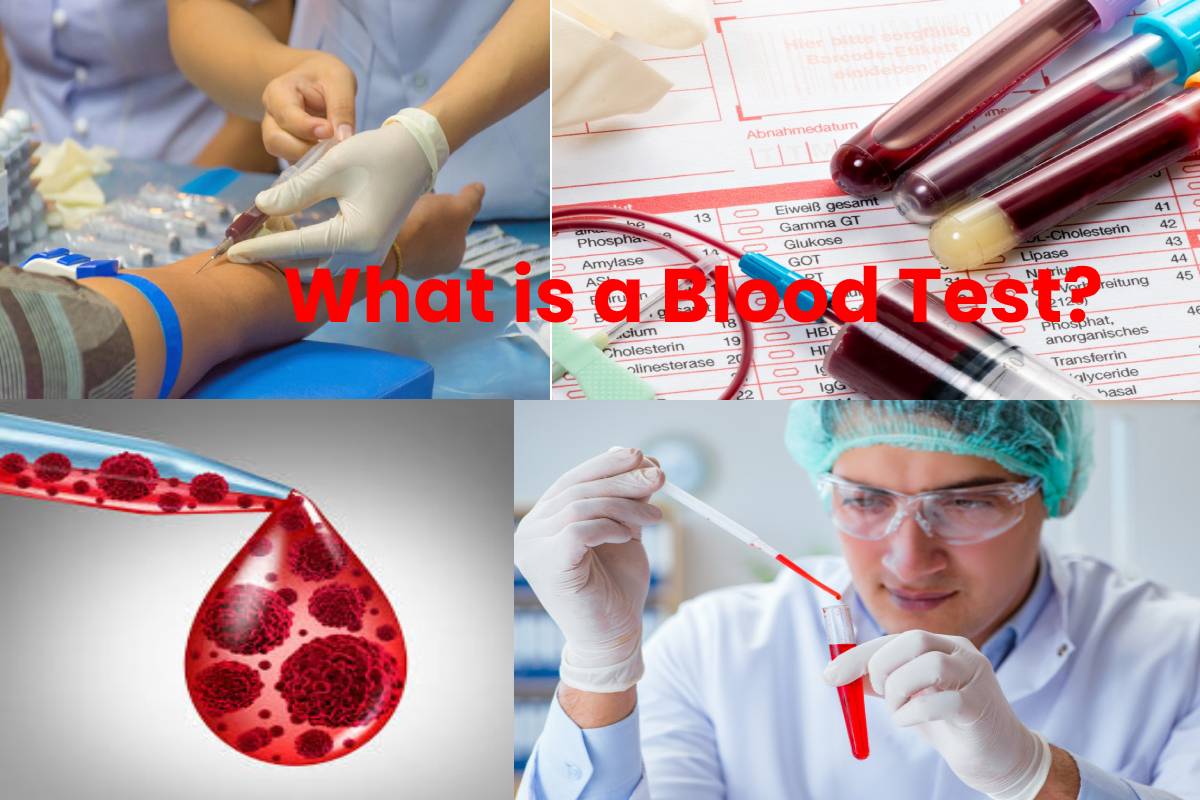Table of Contents
Blood Test Definition
The blood test is one of the most commonly used medical tests and more important in clinical practice.
It consists of extracting a small amount of venous blood from the patient, then transported to the laboratory to analyze it and determine its composition.
In an analytic, we can find numerous data, many of which may sound like Chinese, given its acronyms and different figures.
Below we will try to clarify what each of them means, the average levels and which ones indicate something altered in our body.
How to Determined in the Blood Test?

Blood is a liquid matter that contains three types of cells: red blood cells or erythrocytes (red blood cells), leukocytes (white blood cells), and platelets. These would be the so-called formal elements of blood, those with a defined shape and contour.
But in addition to these cells, the blood contains plasma. It’s also a liquid part, in which there is water, proteins, mineral salts, and other substances.
The most common determinations in a blood test are hemogram, coagulation, biochemistry, and blood gas.
1. Hemogram
- The blood count mainly determines the number and other characteristics of the blood’s formed elements: red blood cells (erythrocytes), white blood cells (leukocytes), and platelets.
2. Coagulation
- Clotting tests use to determine the blood’s ability to clot, which choose by the time it takes for clots to form in reaction to substances that add to the blood for this purpose.
- These tests detect people from bleeding, either due to a congenital problem, such as hemophilia, or diseases acquired throughout life, such as certain liver diseases and severe eating disorders.
3. Biochemistry
- Biochemical determinations measure the concentrations of substances dissolved in the blood, such as glucose, urea, sodium, potassium, proteins such as albumin, liver or heart enzymes, and lipids (fats), cholesterol, and triglycerides, and minerals.
- The abnormal concentration (low or high) of these substances in the blood can indicate some diseases.
4. Arterial Blood Gas
- As its name suggests, this test performs with blood drawn from an artery, usually from the wrist.
- The concentrations of gases (oxygen and carbon dioxide) and bicarbonate of the blood and the degree of acidity (pH) determine it.
How is the Analysis Blood Test Done?

- If you are going to have a blood test, you will have to take a sample. The volume to extract will depend on the number of determinations your doctor has requested, although it will hardly exceed 50 mL (cubic centimeters).
- In most cases, the blood draws from a vein, usually from the elbow area, but some tests, such as blood gases, have to be performed with arterial blood. In this case, the blood typically obtains from an artery in the wrist.
- And also, sometimes, when only a few drops of blood needs for the test, a slight prick of a fingertip is enough. Before the puncture, a tight rubber band will be placed around your arm to highlight the vein.
- This maneuver helps healthcare personnel perform the hole with more excellent safety and less discomfort for you. Next, the puncture site will clean with alcohol.
- These connected to a blood collection device will insert into the vein or artery from which the sample will obtain. Thebber band will remove so that the blood will flow without difficulty.
- Once a sufficient sample has obtained, the needle will remove, and you will ask to press a cotton ball onto the puncture site with your elbow bent. Finally, they will place a small dressing on that area and tell you to keep pushing on it for a few minutes to avoid bruising.
Preparation for Analysis
- No special preparation is required. It will only tell you to go on an empty stomach on the day of the extraction because taking food in the previous hours can alter the results of some tests, such as the determination of blood glucose.
Analysis Results
- If you have a blood test, you or your doctor will receive a report with the test results. This report will include the values of the different determinations made and the values considered normal for each of these determinations.
Why can the Doctor order a Blood Test?
- The blood test is a test that can request almost any medical consultation to assess the general condition of the patient. It will help the doctor solve two critical questions: what happens to the patient and why it happens.
- An example: a person comes to the consultation with noticeable fatigue, loss of appetite, and paleness; in this case, a simple blood test can itself reveal a diagnosis: iron deficiency anemia (due to lack of iron). In this way, you can start treating your disease now without the need for further tests.
- But it must take into account that the blood test is not only a method to diagnose diseases, it is also a way to control the patient’s condition; for example, patients receiving chemotherapy undergo routine tests to check the status of their immune system; and before starting hormonal treatment with oral contraceptives, it is also essential to know the level of hormones in the patient’s blood.
Precautions of Blood Test
- Drawing blood for analysis causes only slight discomfort. If you tend to get dizzy from the sight of blood, you should go to the consultation accompanied and notify the health worker.
- If you suffer from a blood clotting problem, such as hemophilia, or are taking anticoagulants, you should inform the doctor who requests the blood test.
Complications of Blood Test
In principle, blood extraction is a simple technique that does not give rise to complications of any seriousness.
Complications that can arise from having blood drawn are:
- Dizziness in people who are apprehensive and prone to them solve by lying down until that unpleasant sensation subsides.
- Hematomas in the extraction area are due to low closure of the puncture site due to not exerting pressure on it or because the needle has penetrated the vein and has let blood escape to the surrounding tissues.
Normal Results of a Blood Test
Next, we present a series of data that usually reflect in a standard blood test, together with the estimated values within normal or healthy.
Normal values of a blood count

1. Red Blood Cells
- Red blood cells carry oxygen from the lungs to all living tissues and help remove our bodies’ carbon dioxide. Its natural values are 4.32-5.72 million / mm3 in men and 3.9-5.03 million / mm3 in women.
2. Hemoglobin (Hb)
- Hemoglobin present protein in red blood cells and the cause of their color. And also, its natural values are 13.5-17.5 g / dL in men and 12-15.5 g / dL in women.
3. Hematocrit (Hto)
- It is the volume of blood cells about the total of the blood. It expresses a percentage, and its average values are 38.8-50 percent in men and 34.9-44.5 percent in women.
4. MCV (Mean Corpuscular Volume)
- It is the average individual volume of red blood cells. Usually, the value is 78-100 fL.
5. HCM (Mean Corpuscular Hemoglobin)
- It measures the concentration of hemoglobin present in a red blood cell. And also, it should be 27-33 pg (picograms).
6. Lymphocytes
- They are a type of white blood cell that is very important for the immune system since they can distinguish the body’s cells from foreign elements and defend us against infections by generating chemicals to destroy them. Its mean is 1,000-4,000 / mL.
7. Neutrophils
- They are the most common type of white blood cell and makeup 45-70 percent of all white blood cells. Neutrophils are the most abundant type of white blood cell in the blood.
- They are the first defense against attack by an antigen or foreign agent. And also, its reference values are 1,500-7,500 / mL.
8. Monocytes
- It is cells that protect the body from attacks by viruses, bacteria, and external agents.
- They carry out their work by eliminating foreign microorganisms, as well as dead cells. And also, its reference values are 100-950 / mL.
9. Eosinophils
- They are a type of white blood cell that plays an essential role in the body’s response to allergic reactions, asthma, and infection by parasites. Its normal parameters are 20-500 / mL.
10. Platelets
- It helps the blood to clot correctly and rebuilds damaged blood vessels.
- They react quickly when the body receives some damage, as they help stop bleeding. Its normal values are 150,000-450,000 / mm3.
In blood biochemistry, the following studies.

1. Glucose
- It is a sugar ( carbohydrate ) considered the main source of energy for cells.
- Its levels are maximum in the two hours that follow food intake and minimum after prolonged fasting. Its values are 74-106 mg / dL.
2. Urea
- It is the product resulting from the degradation of proteins carried out by the liver. The kidneys also filter it. Urea excretes through the urine as a waste from the body.
- The amount of urea present in the blood allows us to detect if the kidneys are working properly. Its values are usually 17-49 mg / dL.
3. Uric Acid
- It is a substance that produces in our body after breaking down compounds in the blood. And also, their values are generally 4.2-8 mg / dL.
4. Creatinine
- It is the organic compound generated from the degradation of creatine. It is also a waste product of muscle metabolism normally filtered by the kidneys excreting it in the urine.
- Measuring it is the simplest way to check for proper kidney function. And also, its standard values are 0.7-1.3mg/dl in men and 0.6-1.1 in women.
5. Cholesterol (up to 200 mg / dL)
- It is a type of fat in the body. It is produced in our body naturally and is necessary for the formation of our cells. And also, a distinction makes between HDL (so-called “good” cholesterol) and LDL (“bad” cholesterol).
- And also, LDL travels from the liver to the organs to repair cell membranes, but along the way, it leaves small deposits of cholesterol on the artery walls.
- The higher our LDL is, the more likely it is to build up in our arteries. Its normal values are 0-130 mg / dL.
- Instead, HDL travels from the organs to the liver picking up the excess LDL that has remained in the arteries. Thus, it helps us keep our arteries in good condition. Its value must be greater than 40 mg / dL.
6. Triglycerides
- It is a type of fat found in the blood. And also, its average values are up to 150 mg/dl.
7. Transaminases
- These are enzymes found inside the cells of organs such as the liver, heart, kidneys, or muscles and perform an essential metabolic function.
- Gamma-glutamyltransferase, commonly called GGT, is an enzyme found in liver cells that determines liver health. And also, their values are 0-35 units / liter (GOT), 0-45 units / liter (GPT) and 0-55 units / liter (GGT).
8. Calcium
- It is a mineral that integrates our bones and teeth. And also, its values must be 8.6-10.2 mg / dL.
9. Iron
- It is another essential mineral in the transport of oxygen and the process of cellular respiration.
- And also, its values are 65-170 micrograms / dL.
10. Potassium
- It is a macromineral with essential functions at the muscle and nervous system level.
- It is also an electrolyte, like sodium and chlorine, regulating substances inside and outside cells. Their stories must be 3.5-5.1 mEq/liter.

